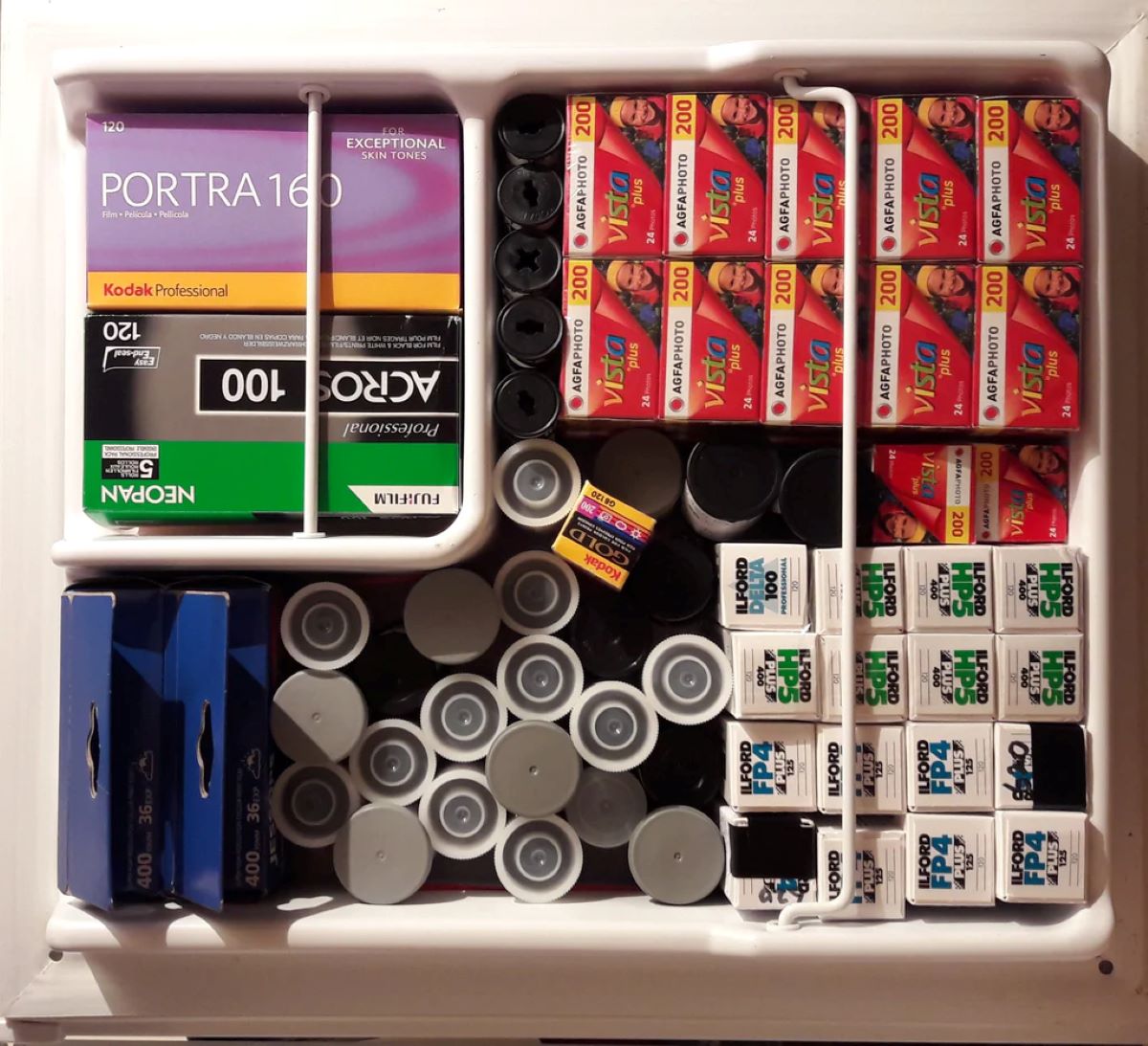Home>Technology>Home Entertainment Systems>What Is Product Placement In Film And Television


Home Entertainment Systems
What Is Product Placement In Film And Television
Modified: January 9, 2024
Learn about product placement in film and television and its impact on home entertainment systems. Explore the effectiveness of brand integration in visual media.
(Many of the links in this article redirect to a specific reviewed product. Your purchase of these products through affiliate links helps to generate commission for Storables.com, at no extra cost. Learn more)
Introduction
Product placement in film and television has become a ubiquitous aspect of modern entertainment. It involves the strategic placement of branded products within the storyline, aiming to subtly promote them to the audience. This marketing technique has gained significant traction due to its ability to seamlessly integrate brands into the narrative, reaching consumers in a non-disruptive manner.
The practice of product placement has a rich history, evolving alongside the entertainment industry and continually adapting to the changing dynamics of consumer behavior. Understanding the origins, types, effectiveness, and ethical considerations of product placement is crucial for comprehending its impact on both media and marketing.
In this article, we will delve into the fascinating world of product placement, exploring its historical roots, diverse forms, and the regulations that govern its implementation. Additionally, we will examine the effectiveness of product placement as a marketing strategy and highlight notable examples of successful placements in popular films and television shows. By the end of this exploration, readers will gain a comprehensive understanding of the intricacies of product placement and its influence on the modern media landscape.
Key Takeaways:
- Product placement seamlessly integrates branded products into movies and TV shows to subtly promote them, enhancing brand visibility and resonating with audiences on a deeper level.
- Ethical and transparent product placement is essential, respecting audience autonomy and upholding storytelling integrity while driving brand recognition and affinity.
The History of Product Placement
Product placement has a storied history, dating back to the late 19th century when early forms of advertising began to emerge. One of the earliest documented instances of product placement can be traced to the 1896 silent film “The Kiss,” where the leading characters prominently used Red Crown Gasoline, a deliberate inclusion arranged by the company to boost brand visibility. This pioneering example laid the foundation for the integration of products into visual media as a means of marketing.
As the film industry burgeoned in the early 20th century, product placement became more prevalent, especially during the golden age of Hollywood. The 1927 film “Wings” featured prominent placements of Hershey’s chocolate bars, effectively establishing the practice as a lucrative marketing strategy. Throughout the ensuing decades, product placement continued to evolve, adapting to the changing landscape of entertainment and advertising.
In the 1980s, product placement experienced a surge in popularity, coinciding with the rise of blockbuster films and the advent of cable television. Brands recognized the immense potential of reaching audiences through popular movies and TV shows, leading to an unprecedented uptick in product placements. This era marked a pivotal shift in the way products were seamlessly integrated into visual media, solidifying product placement as a mainstream marketing tool.
With the dawn of the digital age, product placement transcended traditional screens and expanded into online content, video games, and streaming platforms. The integration of products into various forms of media became more sophisticated, reflecting the evolving consumer landscape and the proliferation of digital consumption.
Today, product placement has become an integral part of the entertainment industry, with brands vying for strategic placements in high-profile productions to capture the attention of global audiences. The history of product placement mirrors the dynamic relationship between media and marketing, showcasing the enduring power of this promotional technique in captivating consumer interest and driving brand recognition.
Types of Product Placement
Product placement encompasses a diverse array of strategies that seamlessly integrate branded products into film and television content. Understanding the various types of product placement is essential for comprehending the nuanced approaches employed by marketers to connect with audiences. The following are common types of product placement:
- Visual Placement: This type involves the prominent display of a branded product within the visual frame of a scene. Whether it’s a character using a specific smartphone or sipping a recognizable beverage, visual placements aim to capture the audience’s attention through conspicuous product exposure.
- Audio Placement: While not visually showcased, audio placements involve the inclusion of brand mentions or references in dialogue. Characters may discuss a particular product or brand, effectively integrating it into the narrative through verbal cues.
- Plot Integration: In plot integration, a branded product becomes an integral element of the storyline, serving a purpose beyond mere visual or verbal promotion. This type of placement seamlessly weaves the product into the plot, enhancing its relevance to the narrative.
- Virtual Placement: With the advancement of digital effects, virtual placement allows for the post-production addition of products into scenes. This technique enables brands to insert their products into content retroactively, providing flexibility and control over placement opportunities.
- Subliminal Placement: Subliminal placements involve subtle and fleeting product appearances that may not be immediately noticeable to the audience. These placements rely on subconscious exposure to reinforce brand recognition without overtly drawing attention to the product.
Each type of product placement offers unique advantages for marketers seeking to connect with audiences in meaningful ways. By leveraging these diverse strategies, brands can tailor their placements to align with the tone and context of the content, maximizing the impact of their promotional efforts.
The Effectiveness of Product Placement
Assessing the effectiveness of product placement entails understanding its impact on consumer behavior, brand perception, and overall marketing objectives. This form of embedded marketing has demonstrated remarkable effectiveness in several key areas:
- Brand Awareness: Product placement serves as a potent tool for enhancing brand visibility. By seamlessly integrating products into compelling narratives, brands can capture the attention of audiences in a non-disruptive manner, leading to heightened brand recognition and recall.
- Consumer Engagement: When products are organically woven into the storyline, they have the potential to resonate with viewers on a deeper level. Engaging narratives that incorporate products effectively can evoke positive emotional responses, fostering a sense of connection between consumers and brands.
- Perceived Authenticity: Well-executed product placements can imbue a sense of authenticity, as the products become an organic part of the fictional world. When integrated seamlessly, products can enhance the realism of the narrative, reinforcing the authenticity of the brand’s presence.
- Behavioral Influence: Product placements have the capacity to influence consumer behavior and purchasing decisions. Subtle exposure to products in a favorable context within entertainment content can subconsciously shape consumer preferences and drive product consideration.
- Cross-Platform Impact: In the digital age, product placement extends beyond traditional media, permeating online platforms and video games. This multi-platform approach enables brands to reach diverse audiences, amplifying the impact of their placements across various channels.
Furthermore, the effectiveness of product placement is often amplified by its ability to circumvent ad-skipping behaviors, offering a non-intrusive means of brand exposure. By seamlessly integrating products into the fabric of storytelling, marketers can bypass the resistance often encountered with traditional advertising formats.
However, the effectiveness of product placement is contingent on several factors, including the relevance of the placement to the storyline, the authenticity of the integration, and the alignment with the target audience’s interests. When executed thoughtfully and strategically, product placement can yield substantial returns, making it a compelling component of modern marketing strategies.
Product placement is when a brand pays to have their product featured in a movie or TV show. It’s a way for companies to advertise to a large audience in a subtle way.
Regulations and Ethical Considerations
As product placement continues to proliferate across various forms of media, regulatory frameworks and ethical considerations play a vital role in ensuring transparency and consumer protection. While regulations governing product placement vary by country and jurisdiction, several key principles and guidelines underscore the ethical implementation of this marketing practice:
- Transparency and Disclosure: Ethical product placement necessitates transparent disclosure to audiences regarding the inclusion of branded products in visual content. Providing clear information about the commercial relationships between content creators and brands fosters consumer trust and promotes transparency in marketing practices.
- Respect for Editorial Integrity: Product placements should uphold the integrity of the creative content, ensuring that the inclusion of branded products does not compromise the artistic vision or narrative coherence. Maintaining a balance between commercial interests and creative autonomy is essential for preserving the authenticity of the storytelling process.
- Target Audience Considerations: Ethical product placement involves thoughtful consideration of the target audience’s demographics, interests, and sensitivities. Aligning placements with the preferences and values of the audience contributes to a more respectful and relevant integration of products into the content.
- Regulatory Compliance: Adherence to regulatory standards and industry guidelines is imperative for ethical product placement. Various regulatory bodies and industry associations provide frameworks for responsible product integration, encompassing areas such as disclosure requirements, content classification, and the protection of vulnerable audience segments.
- Avoidance of Deceptive Practices: Ethical product placement refrains from deceptive or manipulative tactics that may mislead or exploit audiences. Maintaining honesty and integrity in the portrayal of branded products within content safeguards against potential consumer confusion or misinformation.
Furthermore, ethical considerations in product placement extend to the portrayal of products in a manner that aligns with societal values, cultural sensitivities, and ethical norms. Responsible product placement endeavors to uphold ethical standards while leveraging the storytelling potential of branded integrations.
By adhering to ethical guidelines and regulatory mandates, content creators, brands, and marketers can foster a climate of responsible and transparent product placement, prioritizing consumer welfare and the integrity of the entertainment experience.
Examples of Successful Product Placement
Throughout the history of entertainment, numerous instances of successful product placement have left an indelible mark on audiences, effectively integrating brands into popular films and television shows. These examples not only showcase the creative potential of product placement but also underscore its capacity to resonate with viewers and drive brand engagement. Here are a few notable examples:
- Reese’s Pieces in “E.T. the Extra-Terrestrial”: The inclusion of Reese’s Pieces in the iconic film “E.T. the Extra-Terrestrial” exemplifies a quintessential case of successful product placement. The exposure of the candy brand within the narrative led to a substantial surge in sales, solidifying the enduring impact of this strategic placement.
- Aston Martin in James Bond Films: The James Bond franchise has long been synonymous with sophisticated and luxurious vehicles, prominently featuring Aston Martin cars throughout its cinematic legacy. This enduring partnership has not only bolstered the brand’s image but has also contributed to the aura of elegance and prestige associated with the Bond character.
- Apple Products in “Modern Family”: The television series “Modern Family” seamlessly integrated Apple products into its storyline, with characters frequently using iPhones, iPads, and MacBooks. This organic placement contributed to reinforcing Apple’s association with modernity and innovation, resonating with tech-savvy audiences.
- Wilson Sporting Goods in “Cast Away”: The film “Cast Away” prominently featured a Wilson volleyball, which became an unexpected yet impactful product placement. The emotional bond formed between the protagonist and the volleyball showcased the potential for product integration to evoke powerful sentiments and resonate with audiences on a profound level.
- Ray-Ban in “Top Gun”: The film “Top Gun” propelled Ray-Ban aviator sunglasses into the cultural zeitgeist, solidifying their status as a symbol of cool, charismatic style. The film’s pervasive influence on fashion and pop culture underscored the enduring impact of this successful product placement.
These examples illustrate the diverse ways in which product placement can effectively embed brands within compelling narratives, influencing consumer perceptions and driving brand affinity. When executed thoughtfully and seamlessly, product placements have the potential to leave a lasting impression on audiences, contributing to the success of both the content and the associated brands.
Conclusion
Product placement stands as a dynamic and influential marketing strategy that has seamlessly woven branded products into the fabric of visual storytelling. From its humble beginnings in the early days of cinema to its pervasive presence in contemporary entertainment, product placement has evolved into a ubiquitous force in the realm of marketing and media.
The historical evolution of product placement reflects its adaptability to the shifting landscapes of consumer behavior, technological advancements, and the ever-expanding reach of visual content. As brands continue to seek innovative ways to engage audiences, product placement remains a compelling avenue for fostering brand awareness, enhancing consumer engagement, and influencing purchasing decisions.
Moreover, the effectiveness of product placement lies in its ability to transcend traditional advertising barriers, resonating with audiences in a non-disruptive and authentic manner. By integrating products into narratives with creativity and finesse, marketers can forge meaningful connections with consumers, leveraging the emotional resonance of storytelling to elevate brand recognition and affinity.
However, the ethical and regulatory considerations surrounding product placement underscore the importance of responsible and transparent practices. Upholding integrity, respecting audience autonomy, and adhering to regulatory standards are essential facets of ethical product placement, ensuring that the integration of brands into content remains respectful and authentic.
As evidenced by numerous successful examples, product placement has the potential to leave a lasting imprint on popular culture while driving tangible results for brands. When executed with artistry and strategic intent, product placement can enrich narratives, captivate audiences, and fortify the bond between brands and consumers.
In conclusion, the evolution, impact, and ethical dimensions of product placement underscore its enduring relevance as a potent marketing tool. As the entertainment landscape continues to evolve, product placement stands poised to remain a compelling force, seamlessly intertwining the realms of storytelling and branding to create memorable and impactful experiences for audiences worldwide.
Frequently Asked Questions about What Is Product Placement In Film And Television
Was this page helpful?
At Storables.com, we guarantee accurate and reliable information. Our content, validated by Expert Board Contributors, is crafted following stringent Editorial Policies. We're committed to providing you with well-researched, expert-backed insights for all your informational needs.















0 thoughts on “What Is Product Placement In Film And Television”